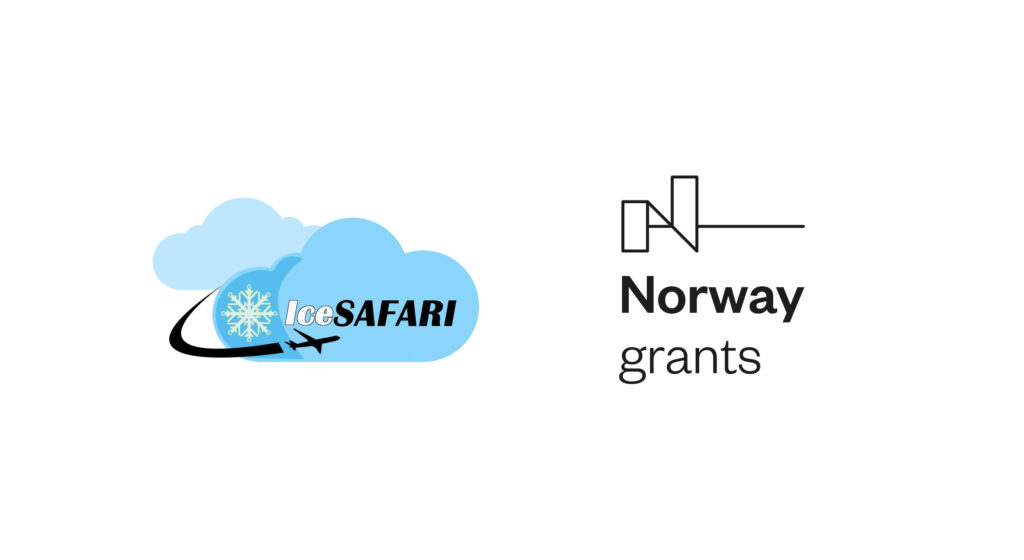Operating drones in sub-zero temperatures can cause both damage and lead to loss of vehicle. How can we make flights safer for drones and small piloted aircraft during winter and at higher latitude?
Commercial drones and small aircraft are utilized more and more the world over, for a wide range of applications, such as agriculture, construction, communication, surveillance and transportation of goods. The use of drones is expected to increase greatly in the years ahead.
However, drones risk icing while flying in sub-zero temperatures and have no way of de-icing. Thus, operating drones in sub-zero conditions introduces the risk of rotor failure and crashing to the ground, which can result in damage to or loss of the airborne platform, the freight, or in the worst case scenario, damage or injury to third parties’ health or property.
How can flight safety in sub-zero temperatures be increased to enable drones and small aircraft to operate during winter and at higher latitudes? This is the aim of the IceSafari project.
The IceSafari project is a cooperation between Andøya Space with partners in Norway and Romania. The project aims to increase flight safety for drones and small aircraft by avoiding icing conditions, which occur at temperatures below 0ºC and high humidity, like in supercooled fog and clouds.
A key project
– For Andøya Space, IceSafari is an important project, because we make use of our expertise on rocket payloads to serve a new scientific community. The research focus is the lower part of the atmosphere using research aircrafts and drones. In addition, our own increasing drone and aircraft activities will gain safety, since icing conditions are common at our latitudes, says Michael Gausa, Director of Research and Development.
The project aims to obtain data in three flight campaigns, planned to take place in Norway, Poland and Romania. The sensor and instrument development through IceSafari is expected to be a door opener for future participation in international satellite validation campaigns and in further activities related to research and applied science.
– Flight campaigns for scientific research is a new but growing sector for us here at Andøya Space, which we are very excited to do, Gausa says.

The IceWarn sensor
The IceSafari project will develop a cluster of sensors called IceWarn, an early warning system of icing conditions for commercial drones, enabling them to avoid areas with such conditions.
In order to develop this early warning system, the IceSafari team first needs to advance the understanding of mixed-phase clouds. These are clouds that consist of super cooled liquid droplets and ice particles and pose the greatest threat to drones and aircraft due to icing.

The IceWarn sensor system will monitor the ambient conditions of the air and evaluate the risk of icing. If icing conditions are imminent, the system will alert the pilot of the impending danger.
The engineering team at Andøya Space will first select sensors that can endure condensation and precipitation at low temperatures. They will conduct both field and laboratory studies to identify which sensors are best suited for such work.
IceWarn must also be extremely lightweight and energy efficient in order to be suitable for drone platforms.
The HoloScene cloud probe
However, measuring the correct temperature and humidity is not sufficient alone to determine icing conditions, and the amount of super cooled liquid in mixed-phase clouds depends on complex microphysics at the micrometer scale.
Calculations of super cooled liquid droplets have been a challenge in both numerical weather predictions and climate simulations for years.
The development of IceWarn needs comprehensive knowledge of the microphysics of mixed-phase clouds in temperatures between -38 and 0 °C. This will require an extensive dataset of airborne in-situ measurements of the properties of mixed-phase clouds.
Therefore, the IceSafari team at Andøya Space will, together with their partners, develop an aircraft certified holographic cloud probe called HoloScene. The probe is based on earlier models, originally used on tethered balloons, gondolas etc. HoloScene will measure the cloud droplet, ice crystal size and number concentration, as well as the spatial distribution of cloud particles, in order to develop the numerical models that IceWarn needs.
Partnership with Romania
The cooperation in IceSafari will establish a long-term partnership between Norwegian and Romanian research institutions. These are Andøya Space, the National Institute for Aerospace Research “Elie Carafoli” (INCAS) in Romania, the University of Oslo in Norway and the University of Bucharest in Romania (UBFF).
This collaboration will strengthen the capabilities of the partners to conduct airborne cloud research and related numerical modeling in order to advance the frontier of research on climate change, severe weather and icing phenomena.
The partnership will train master and PhD students in a broad specter of scientific and engineering fields to ensure a complete cycle of knowledge and transfer between the participants, and to support the effort of Romanian organizations to increase their participation in European and international research and development programs.

The IceSafari project is funded by UEFISCDI under the research programme associated with Norwegian Financial Mechanism 2014-2012 – Norway Grants. Project code RO-NO-2019-0423.

